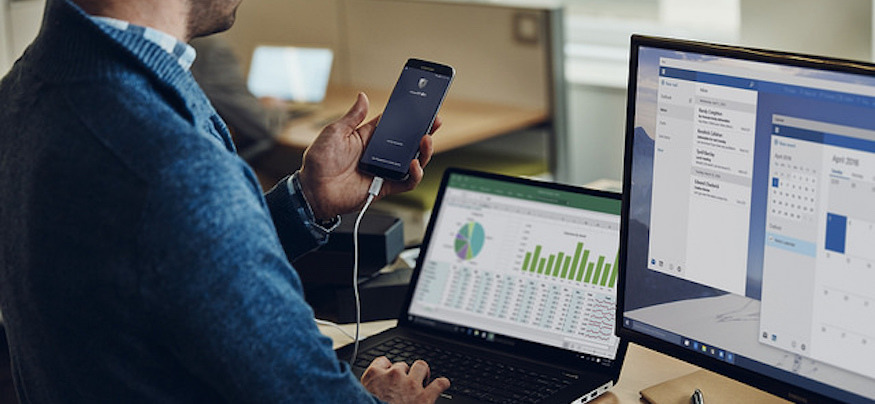Mobile devices are a must for employee productivity, offering them the flexibility to work in a way that suits them. However, mobile security risks are increasing, and ITDMs need to take a proactive approach to cybersecurity to ensure the protection of company data.
Mobile security risk impacts everyone, from consumers to businesses to government agencies. A recent study of mobile device use in U.S. federal agencies by Lookout concludes that, while educating users is essential, it’s not by itself sufficient, as 40 percent of employees will still use their personal devices at work despite regulation. Rather, technology solutions are required to streamline device management and security.
Echoing this sentiment, the Department of Homeland Security recommends that agencies deploy mobile device management or enterprise mobility management technologies, and that these capabilities be enhanced with further technology solutions. The report specifically calls out the use of Samsung Knox for enhancing security, citing its mobile device enrollment capabilities as beneficial for reducing mobile security risk.
Many agencies have a policy of purchasing devices for employees, which ensures that older devices with fewer security controls are not in use. This allows them to oversee what applications are installed and ensure controls such as effective web filtering are in place. When choosing and evaluating devices, the security controls that come installed are a prime consideration.
How Can a Custom Mobile Solution Enhance Security?
Learn how you can regain productivity with a secure solution like Knox Customization. Download Now
By choosing devices that have Knox installed on them, IT staff can configure devices to be secure right from first use, decreasing the possibility of certain security vulnerabilities. If a BYOD program is supported, a security policy should be developed that limits the types of devices that can be used, providing guidance regarding the age of devices or their support for controls such as encryption. Agencies can also provide a list of approved devices to users, allowing them to select which one they prefer. Furthermore, software management apps can be installed on employee-owned phones, quickly bringing them up to security standards.
Mobile Device Configuration Services
A recent development with Knox is the launch of a cloud-based mobile device configuration service, which enables administrators to remotely configure all devices in bulk so that they can ensure that mobile devices in use are secure enough, while attaining productivity gains and achieving the desired return on investment.
Through such a service, organizations can ensure that the devices they issue to users are not only secure but are fit for the purpose intended. Devices can be locked down so that employees can only access the specific applications that they need to do their jobs to keep them focused on the tasks at hand.
In a field environment, devices can be provisioned so that only apps providing work-related information, such as what repairs need to be done or which buildings need to be inspected. In the defense sector, devices can be locked so that users can only access deployment information, real-time intelligence and training materials. For first responders, where health and safety is critical, apps providing situational awareness information can be provisioned and other apps blocked.
Enhancing Securiting Through Containerization
Furthermore, mobile devices can be outfitted with features for containerization. They can be set so that devices cannot be used for personal purposes or, alternatively, through the use of containerization capabilities, personal information for leisure purposes can be separated from business information to ensure there’s no co-mingling between corporate and personal data.
With mobile device configuration features, controlled over the air by an organization’s administrators, user experience can be significantly enhanced without the need for devices to be recalled when settings need to be changed.
As the mobile organization evolves, and more employees are using their devices for both personal and professional reasons, ITDMs must re-evaluate how they address their security infrastructure. By addressing hardware concerns and implementing a software management solution, organizations and agencies can develop a defense-grade, scalable security framework.
Are unpatched security vulnerabilities worth the risk? A recent report shows just how much known vulnerabilities can cost your business.






